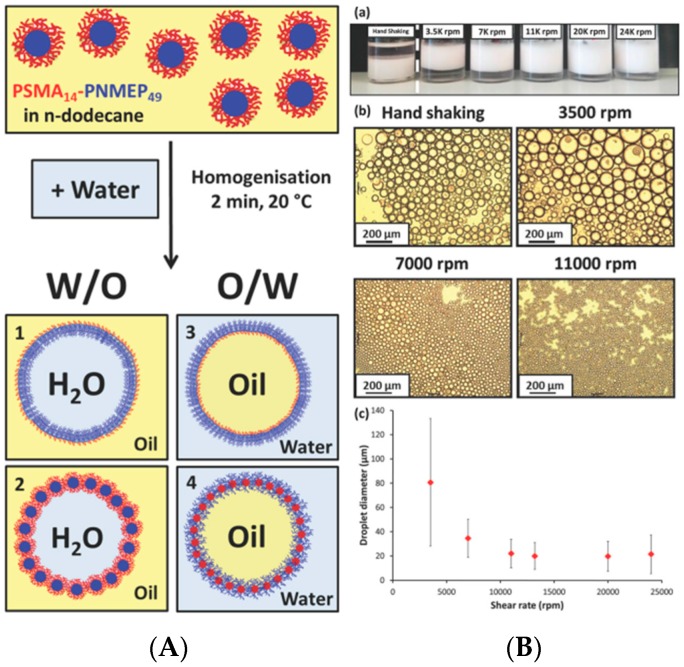Figure 12.
(A) Schematic representation of the four possible types of emulsions which could form as a result of homogenizing the poly(stearylmethacrylate)–poly(N-2-(methacryloyloxy)ethylpyrrolidone) (PSMA14–PNMEP49) nanoparticles prepared in n-dodecane with water; (B) (a) Digital photographs of Pickering emulsions prepared using PSMA14–PNMEP49 nanoparticles at various shear rates. Oil-in-water emulsions are formed in all cases, except when hand-shaking is used; this latter approach results in a water-in-oil emulsion instead; (b) Optical microscopy images recorded for the droplets prepared via hand-shaking, or via homogenization at 3500 rpm, 7000 rpm or 11,000 rpm (scale bar = 200 µm); (c) shear rate dependence for the mean droplet diameter (as determined by laser diffraction) for emulsions prepared using PSMA14–PNMEP49 spherical nanoparticles as the sole emulsifier. The error bars represent the standard deviation of each mean volume-average droplet diameter, rather than the experimental error. Adapted from [105]. Published by The Royal Society of Chemistry.

